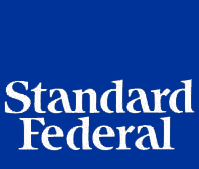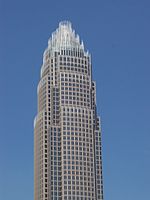Related Research Articles

The Federal Deposit Insurance Corporation (FDIC) is a United States government corporation supplying deposit insurance to depositors in American commercial banks and savings banks. The FDIC was created by the Banking Act of 1933, enacted during the Great Depression to restore trust in the American banking system. More than one-third of banks failed in the years before the FDIC's creation, and bank runs were common. The insurance limit was initially US$2,500 per ownership category, and this has been increased several times over the years. Since the enactment of the Dodd–Frank Wall Street Reform and Consumer Protection Act in 2010, the FDIC insures deposits in member banks up to $250,000 per ownership category. FDIC insurance is backed by the full faith and credit of the government of the United States, and according to the FDIC, "since its start in 1933 no depositor has ever lost a penny of FDIC-insured funds".
Washington Mutual was the United States' largest savings and loan association until its collapse in 2008.
A savings and loan association (S&L), or thrift institution, is a financial institution that specializes in accepting savings deposits and making mortgage and other loans. The terms "S&L" and "thrift" are mainly used in the United States; similar institutions in the United Kingdom, Ireland and some Commonwealth countries include building societies and trustee savings banks. They are often mutually held, meaning that the depositors and borrowers are members with voting rights, and have the ability to direct the financial and managerial goals of the organization like the members of a credit union or the policyholders of a mutual insurance company. While it is possible for an S&L to be a joint-stock company, and even publicly traded, in such instances it is no longer truly a mutual association, and depositors and borrowers no longer have membership rights and managerial control. By law, thrifts can have no more than 20 percent of their lending in commercial loans—their focus on mortgage and consumer loans makes them particularly vulnerable to housing downturns such as the deep one the U.S. experienced in 2007.

The savings and loan crisis of the 1980s and 1990s was the failure of 32% of savings and loan associations (S&Ls) in the United States from 1986 to 1995. An S&L or "thrift" is a financial institution that accepts savings deposits and makes mortgage, car and other personal loans to individual members.

Standard Federal Bank was a Troy, Michigan-based bank serving Michigan and Northern Indiana in the United States which was acquired by Bank of America on 5 May 2008.
Great Western Bank was a large retail bank that operated primarily in the Western United States. Great Western's headquarters were in Chatsworth, California. At one time, Great Western was one of the largest savings and loan in the United States, second only to Home Savings of America. The bank was acquired by Washington Mutual in 1997 for $6.8 billion.
H.F. Ahmanson & Co. was a California holding company named after Howard F. Ahmanson Sr. It was best known as the parent of Home Savings of America, once one of the largest savings and loan associations in the United States.

The Financial Institutions Reform, Recovery, and Enforcement Act of 1989 (FIRREA), is a United States federal law enacted in the wake of the savings and loan crisis of the 1980s.

Zions Bancorporation is a bank holding company headquartered in Salt Lake City, Utah. Zions Bancorporation originated as Keystone Insurance and Investment Co. in April 1955. In April 1960, Keystone, together with several individual investors, acquired a 57.5 percent interest in Zions First National Bank from the Church of Jesus Christ of Latter-day Saints. In 1965, the name of the company was changed to Zions Bancorporation.

The Lincoln Savings and Loan Association of Irvine, California, was the financial institution at the heart of the Keating Five scandal during the 1980s savings and loan crisis.
American Savings Bank is Hawaii's third-largest financial institution, with assets of $6.7 billion. It is a subsidiary of Hawaiian Electric Industries.

Old Stone Bank was a popular Rhode Island banking institution that was founded in Providence in 1819 as a mutual savings bank that was called Providence Institution for Savings.
Gibraltar Savings and Loan Association was an American bank operating in California, Washington, and Florida. It was organized as a savings and loan and failed in 1989.
Midwest Federal Savings and Loan was an American bank headquartered in Minneapolis, Minnesota. Starting in the mid-1960s, its headquarters were located at 801 Nicollet Mall in what is now called McGladrey Plaza. Midwest Federal was in business for ninety-nine years until its failure in 1989. Its collapse was due mostly to bad real estate loans. On April 22, 1991, the St. Paul Pioneer Press called the bank's failure the "largest financial disaster in Minnesota history" and was part of the savings and loan crisis of the 1980s. Midwest Federal had assets of US$3.5 billion, was liquidated by the government at a cost of US$1 billion to taxpayers. Midwest was US$1 billion in debt when it was seized by regulators in February 1989.
Golden West Financial was the second-largest savings and loan association in the United States, operating branches under the name of World Savings Bank.
Bank United Corporation, headquartered in Houston, Texas, was a broad-based financial services provider and the largest publicly traded depository institution headquartered in Texas before its merger with Washington Mutual in 2001. Bank United Corp. conducted its business through its wholly owned subsidiary, Bank United, a federally chartered savings bank. The company operated a 155-branch community banking network in Texas, including 77 in the Dallas/Fort Worth Metroplex, 66 in the greater Houston area, five in Midland, four in Austin, and three in San Antonio; operated 19 SBA lending offices in 14 states; was a national middle market commercial bank with 23 regional offices in 16 states; originated mortgage loans through 11 wholesale offices in 10 states; operated a national mortgage servicing business serving approximately 324,000 customers, and managed an investment portfolio. As of June 30, 2000, Bank United Corp. had assets of $18.2 billion, deposits of $8.8 billion, and stockholder's equity of $823 million.

Valley National Bank of Arizona was a bank based in Phoenix, Arizona, founded in 1900 and acquired by Bank One in 1992. The bank was one of Arizona's leading financial institutions during the 20th century and the last major independent bank in Arizona at the time of its acquisition.
CenTrust Bank, A State Savings Bank was a Miami, Florida-based savings and loan. Its failure in 1990 was one of the largest and costliest failures of the savings and loan crisis.
American Savings and Loan Association was an American savings and loan based in Stockton, California. It was the largest thrift failure and the federal government's costliest resolution during the savings and loan crisis at an estimated cost of $5.4 billion.
Gibraltar Savings Association was a Houston, Texas based savings and loan. Its failure in 1988 and resolution was one of the most expensive in the savings and loan crisis at an estimated cost of $2.875 billion.
References
- ↑ Brown, Matthew (June 22, 1989). "Western S&L Falls to Regulators". Deseret News .
- ↑ Furlong, Tom (June 2, 1990). "BankAmerica Buys Arizona's 2nd-Largest S&L : Thrifts: It Outbids Wells Fargo and Security Pacific in a Federal Auction. Other Banks Have Suffered Huge Losses in the State in Recent Years". Los Angeles Times .
- ↑ Roche, Lisa Riley (August 31, 1990). "Utah, Arizona Overseeing Bank's Branch". Deseret News .
- ↑ "President of failed Western Savings is fined". Tucson Citizen . November 28, 1995.
- ↑ "American Newcomen". The Newcomen Society of the United States. Archived from the original on May 27, 2005. Retrieved September 20, 2007.
